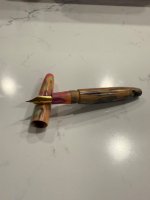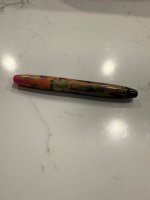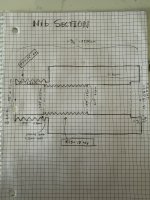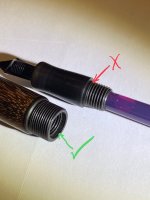wilbersc
Member
I gave it a shot and turned my first kitless pen. The kitless hardware kit came from BG Artforms and the blank came from Cocoon Blanks.
I made a few mistakes along the way (broke section when turning, turned cap too thin and had to remove the last couple threads). My biggest issue was turning it too thin.
I'm looking to improve so please give me advice and helpful hints.
I made a few mistakes along the way (broke section when turning, turned cap too thin and had to remove the last couple threads). My biggest issue was turning it too thin.
I'm looking to improve so please give me advice and helpful hints.




